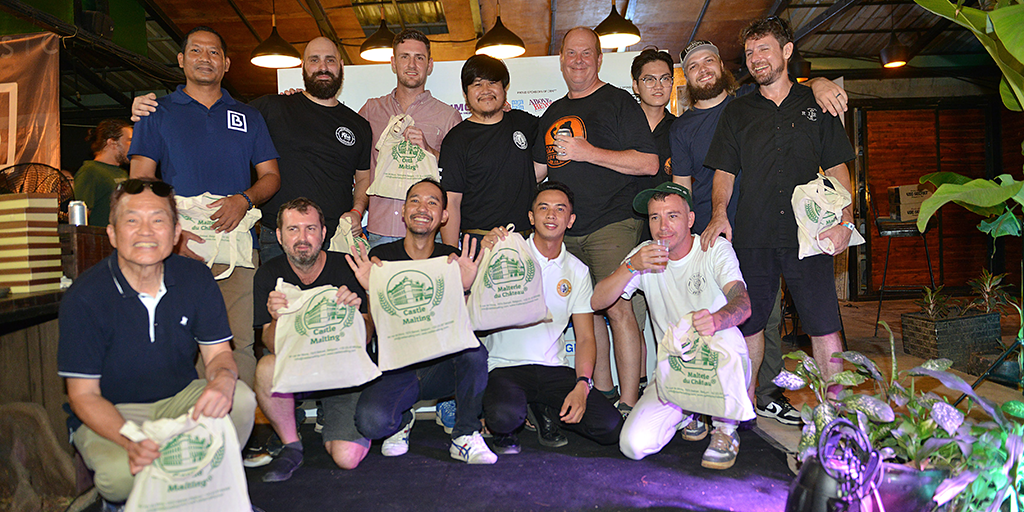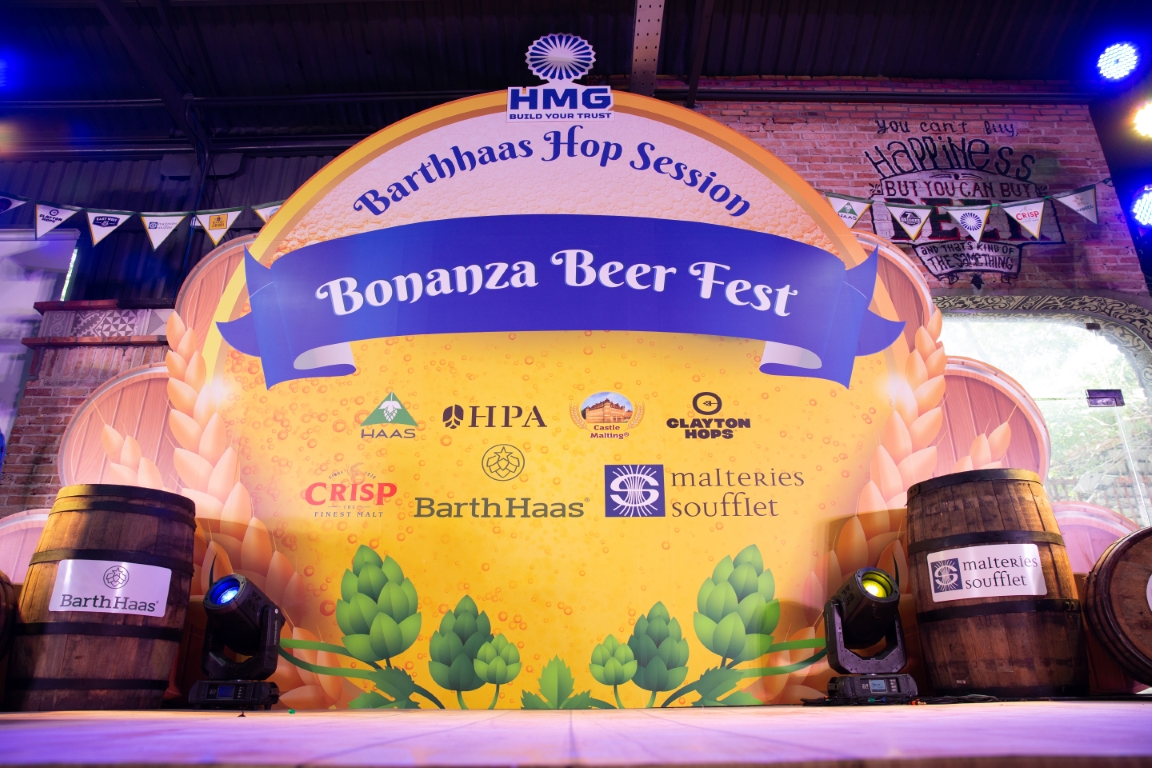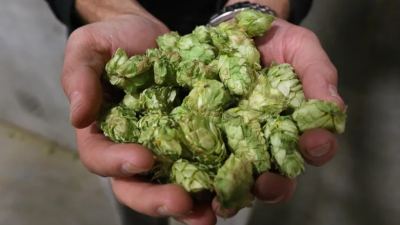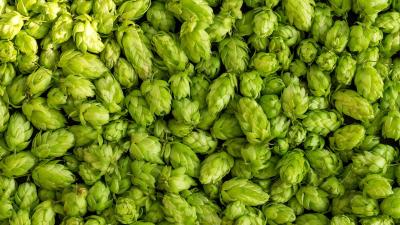Hello and welcome to the 2025 BarthHaas HopUpdates!
Weather conditions and Plant Development Germany
Since the last HopUpdate, summer temperatures prevailed in all German growing regions in June and July. Precipitation levels in June were still around 25% below the long-term average. In July, 70 liters of precipitation have fallen, which is around the 10-year average at the Hüll weather station. More precipitation is forecasted for the weekend. The largest variety in the German growing region, Herkules, is currently considered to be average, as are the varieties Spalter Select, Hallertauer Magnum, and Hallertauer Mittelfrüh. The varieties Perle, Hallertauer Tradition, and the new high-alpha variety Titan are slightly below average.
The stage of development is at a level that corresponds to the long-term average. The hop plants are at BBCH stage 55, and the inflorescence buds are enlarging. BBCH stages 61 to 65, which indicate the beginning of flowering or full bloom, can be found in all varieties. Varieties such as Hallertauer Mittelfrüh and Hallertauer Magnum are already beginning to develop cones.
The control of the primary infection with downy mildew was successful. However, due to the prevailing weather conditions, there is a risk of a secondary downy mildew infection. Powdery mildew is currently hardly to be found on the leaves. Most crops are free of aphids. Regular monitoring for red spider mite infestation is still necessary. In some crops, the damage threshold has been exceeded, so further control measures are required. An increase in wilting symptoms has been observed in susceptible varieties.
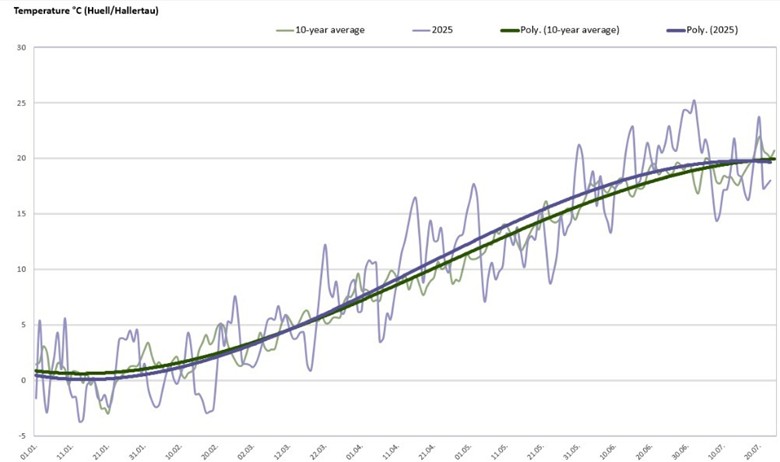
Temperature July 2025
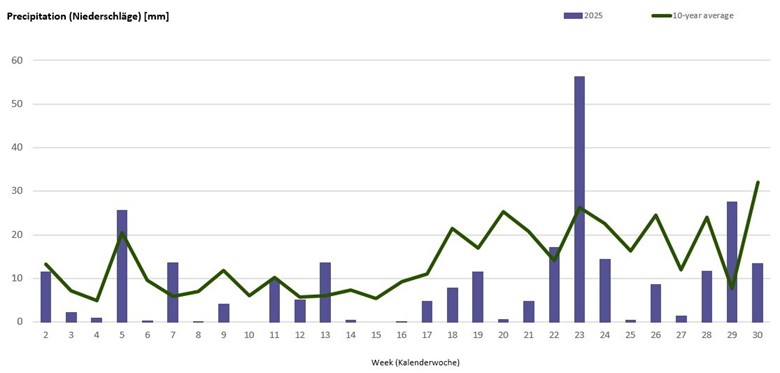
Precipitation June 2025
Other growing areas
Plant Development Czech Republic
In the Czech growing regions, too, sufficient rainfall in recent weeks has led to good plant development. We currently expect an average harvest. Diseases and pests are under control.
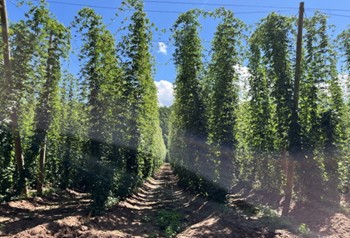
Saazer
Plant development Slovenia
After a heatwave at the end of June, normal summer temperatures prevailed with regular showers and thunderstorms. Depending on the region, there was sufficient rainfall in July, while temperatures were significantly warmer than the long-term average. Development is in line with the long-term average. The hops are in full bloom until the beginning of cone development. Diseases are currently not a problem. Red spider mites can be found in some fields and must continue to be controlled. Hop stocks are considered average.
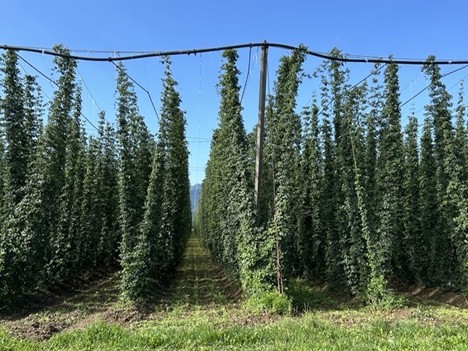
Slovenia Aurora
Plant development Poland
The development stage is in line with the long-term average. Sufficient rainfall at the beginning of July with moderate temperatures. Diseases have only appeared sporadically, with aphids and red spider mites found in some crops. There are significant differences in the heterogeneous hop fields but overall, the crops across all growing regions can be classified as average.
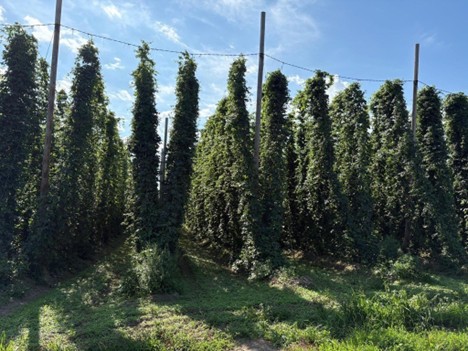
Poland Lubelski
Plant development USA
The plant development in the US is currently at the long-term average. Although water is still being rationed, this currently does not represent a critical situation. Growers have been able to meet their water needs through additional measures. Powdery mildew and spider mites are only occurring to a very minor extent. Although there have been fires in the surrounding area, the smoke is currently not affecting the hops. The main varieties Citra and Mosaic, as well as the Alpha variety CTZ, are currently performing at an average level, while the Centennial and Simcoe varieties are performing below average.
Source: BarthHaas Group

